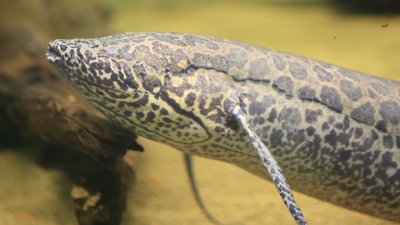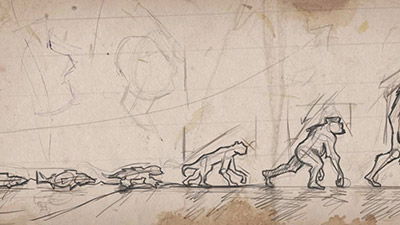Middle Ear Missing Links?
The fossilized mammal Liaoconodon hui, found in China, is being hailed as the missing link in middle ear evolution from reptiles to mammals.
News Source
- ScienceDaily: “Long-Sought Fossil Mammal With Transitional Middle Ear”
Mammals have one lower jawbone (the mandible) and three middle ear bones. Reptiles have only one middle ear bone but several lower jaw bones. Evolutionists postulate that some of the jaw bones in reptilian ancestors migrated over time to the middle ear of ancestral mammals. However, “fossils illuminating this critical transference are sparse and often ambiguous,” according to the article in Nature.
Because two of the middle ear bones in Liaoconodon hui are connected to the jawbone by ossified Meckel’s cartilage, the new fossil is believed to be a transitional form showing how the bones were stabilized during their evolutionary journey.
Meckel’s cartilage in mammalian embryos helps shape the middle ear bones and the mandible; then it disappears. But in reptiles Meckel’s cartilage does not disappear; it ossifies to form part of the jaw. Since the Liaoconodon hui’s ear bones are connected by an ossified piece of Meckel’s cartilage to its mandible, the researchers hypothesize that this creature represents a critical link in reptile-to-mammal evolution.
Though not preserved in the fossil record, the cartilage is assumed by these researchers to have been there, holding the migrating bones in place until they could take their rightful place in the middle ear of modern mammals.
Cartilage is not generally preserved in fossils. Therefore, the researchers assume that Meckel’s cartilage had actually persisted beyond the embryonic stage in many extinct mammals in the evolutionary tree. Though not preserved in the fossil record, the cartilage is assumed by these researchers to have been there, holding the migrating bones in place until they could take their rightful place in the middle ear of modern mammals.
The researchers’ conclusions depend heavily on the discredited assumption that “the embryonic pattern of modern mammals recapitulates the phylogenetic changes (quotation from Nature).” See footnotes 2-5 in Jurassic Spark? for more information.
Furthermore, lining up a series of fossils until similar structures seem to march across the anatomy does not prove that those creatures were ancestrally linked. Even the definitions of comparable structures seems arbitrary, as suggested by phrases like “most probably homologous with” and “probably equivalent to” followed by a note about parts that don’t match.
Additional red flags in the Nature article are illustrations which have been “modified,” are “not on the same scale,” and represent “two distinct evolutionary stages, each involving several morphological changes.” Once again, a string of assumptions leads to a desired conclusion. But the result is more story-telling about the past.
For More Information: Get Answers
Remember, if you see a news story that might merit some attention, let us know about it! (Note: if the story originates from the Associated Press, FOX News, MSNBC, the New York Times, or another major national media outlet, we will most likely have already heard about it.) And thanks to all of our readers who have submitted great news tips to us. If you didn’t catch all the latest News to Know, why not take a look to see what you’ve missed?
(Please note that links will take you directly to the source. Answers in Genesis is not responsible for content on the websites to which we refer. For more information, please see our Privacy Policy.)
Recommended Resources

Answers in Genesis is an apologetics ministry, dedicated to helping Christians defend their faith and proclaim the good news of Jesus Christ.
- Customer Service 800.778.3390
- © 2024 Answers in Genesis






